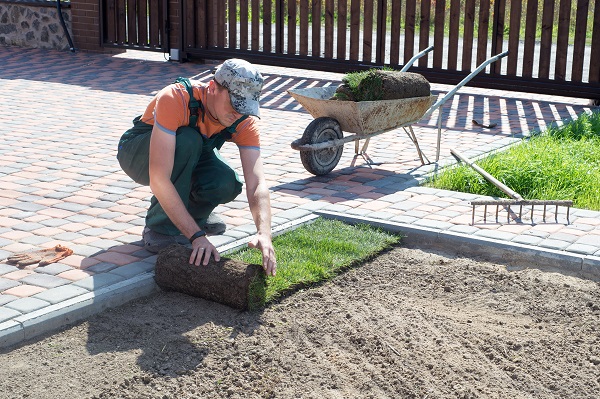Starting to settle into the idea of chillier weather? Before the temperatures start to fall, take this time to do some maintenance around your property. Planting sod in the fall can bring new beauty to your lawn just in time for the changing seasons. If you're installing sod during the cooler seasons, make sure you choose cool season grasses.

You may not even realize how much stuff has accumulated in your yard area over time. Any materials and objects need to be removed. Items such as wood, bricks, and cement need to be moved. Do a thorough check for stumps, rocks, boulders, stones, and other natural debris that you might not notice upon first check, and remove those items too.
You'll want to grade the space properly to prevent any drainage problems. Slope the grade away from the foundations of buildings will help eliminate drainage problems on the property. Take care to reduce or remove severe slopes and low-lying areas which have potential to hold water in the future. Those spots should be filled upfront so the soil has a chance to settle. Toward the end of the process, you might need to add more filler. If your property is small, you can grade with hand tools. For a larger space, you'll want to use a tractor-mounted blade or box for the work. Keep an eye out for newly uncovered debris that will need to be moved.
The root zone is just what it sounds like; it is the area where you will lay down the sod and where the root system will develop. Take the time to prepare it properly. In particular, determine the pH level of the soil by performing a soil test. Then, make modifications, as needed. Acidic soils have a pH level of 6 or below. Alkaline soils have a pH of 7.5 or greater. Once you've determined the pH of your soil, ask a sod professional which fertilizer or other products to use.
Don't make the mistake of feeding your fresh sod tons of fertilizer, as this can damage it. Go light on the nitrogen, using a formula of no more than one pound per 1,000 square feet of lawn. Starter fertilizer that is high in phosphate can be beneficial for new sod.
It's time to check for low spots. These need to be filled to match the surrounding grade. Allow the site to settle, and, if possible, employ irrigation water to assist with the settling process. This will ensure your property is ready for a happy green lawn.
Article Updated in August 2019.
For more backyard ideas, check out our article How to Create a Beautiful Backyard Landscape on a Budget
###
Evergreen Turf is your source for the highest quality sod in Arizona. Our friendly, knowledgeable people are committed to answering all of your questions to ensure a stress-free experience with your new Arizona sod lawn. Whether you wish to sod a small play area for the family or an entire golf course, Evergreen Turf can help you make it happen.
Our team serves customers throughout Arizona, including Phoenix, Mesa, Tempe and Tucson. Browse our website for information and tips on how to create and maintain a beautiful lawn. Or, give us a call and talk to one of our sod specialists at 480-456-1199. Better yet, stop by and meet the team at our convenient Chandler location.
Enter your email address below and we'll remind you when it's time to reseed & change your irrigation schedule. You can remove yourself from our list at any time.
For questions or to order by phone call:
(480) 456-1199